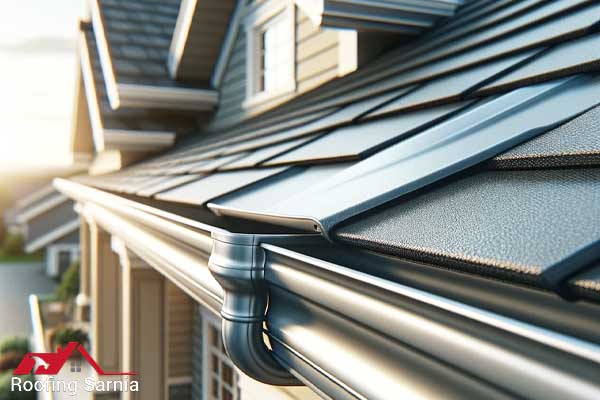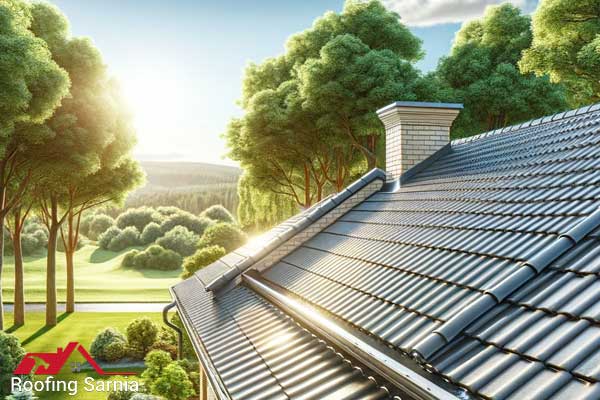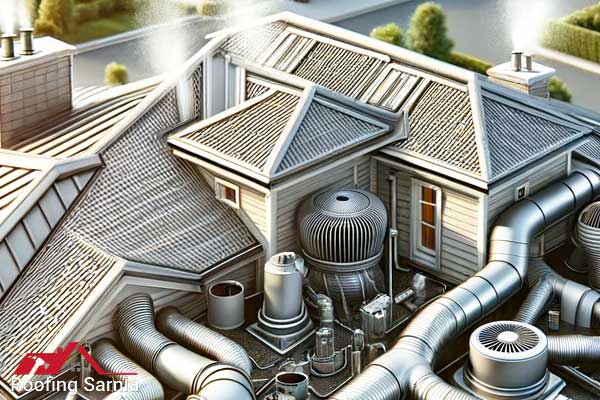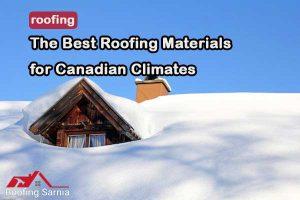In Canada, where the weather can be particularly harsh, maintaining a roof is crucial for homeowners. Many find themselves needing to replace their roofs due to wear and tear or damage from severe weather conditions. However, a well-maintained roof can significantly outlast those that are neglected. Regular maintenance not only extends the lifespan of your roof but also helps in averting premature replacements.
This article presents a comprehensive guide to roof maintenance, tailored to withstand the unique Canadian seasons. It aims to equip homeowners with practical strategies to identify and address potential roof damages. A well-maintained roof is not just an integral part of your home’s structure; it’s also vital for ensuring a comfortable and safe living space. By adhering to regular maintenance routines, you can ensure that your roof continues to provide reliable protection against the elements for many years.
When Should You Inspect Your Roof?
For optimal roof health, it’s recommended to schedule inspections around the changing seasons, especially in areas prone to extreme weather. This means preparing your roof for the rigors of both the intense cold common in northern regions during winter and the scorching heat and relentless sun found in southern and western summers. These weather extremes can cause significant wear and tear on your roof.
Inspections should ideally take place before the onset of these harsh seasons to identify and rectify any vulnerabilities. Additionally, it’s crucial to perform a thorough inspection following any major weather event, like hurricanes, tornadoes, heavy hailstorms, or strong winds. These events can cause immediate and sometimes hidden damage to your roof, which if left unchecked, can lead to more significant issues. Regular inspections in these instances are key to maintaining the longevity and integrity of your roofing system.
CLEAN GUTTERS
The gutter system plays a pivotal role in safeguarding your home from water damage. It’s designed to channel the water flowing off your roof away from the home’s foundation. However, when gutters are blocked, this can lead to water seeping beneath the shingles, potentially damaging them, and causing overflow that can affect your home’s siding or brickwork.
To prevent these issues, it’s essential to maintain clean and unobstructed gutters. Regular cleaning ensures that water flows smoothly through the gutters. Additionally, it’s important to check that your gutters are firmly attached to your home, as loose gutters can lead to inefficient water diversion.
In certain cases, where the roof design leads to heavy water flow, consider the installation of additional features like kick-out flashing or gutter splash guards. These additions are particularly beneficial in areas where gutters connect to the walls at sharp angles, as they help in directing the water flow more efficiently, reducing the risk of water-related damage.

LIMIT MOSS & ALGAE GROWTH
Moss and algae can be more than just an aesthetic issue for roofs; they can also lead to significant damage. Factors such as a roof facing north in the northern hemisphere, abundant shade from trees, and a humid climate can create ideal conditions for their growth. Moss, in particular, can be problematic as it retains moisture. When it accumulates in large quantities, it can lift and displace shingles, exposing the lower layers of the roof to water damage.
Algae growth, while not as structurally damaging, can mar the appearance of your roof with unsightly dark streaks. To combat algae, a solution of chlorine bleach and water can often be effective in reducing these stains. However, if your roof is prone to moss or algae due to its environmental conditions, you might need to consider ongoing treatment strategies.
A specialized approach to combat algae growth is the use of algae-resistant roofing materials. For example, Owens Corning® shingles feature StreakGuard™ Algae Resistance Protection, which incorporates copper-lined granules produced by 3M. These granules are specifically designed to inhibit algae growth, helping maintain the aesthetic and structural integrity of the roof.
REMOVE NEARBY TREE BRANCHES
Ensuring that tree branches are a safe distance from your roof is an important aspect of roof maintenance. When branches are allowed to come into contact with the roof, particularly during periods of strong winds, they can cause significant wear and tear. The friction from branches rubbing against the roof can dislodge or damage the protective granules on shingles, leading to accelerated aging of the roof and potential leaks.
To mitigate this risk, it’s advisable to regularly trim back any branches that are close to the roof. The goal is to maintain a clear space so that, even in the most severe wind conditions, branches do not touch either the roof or the gutter system. This preventative step not only helps to prolong the life of your shingles but also reduces the likelihood of debris accumulation in gutters, ensuring that your roofing system remains effective and damage-free.
CLEAR OFF ORGANIC DEBRIS
While trees around your home can enhance its aesthetic appeal and provide welcome shade, they also often lead to a buildup of organic debris on your roof. Seasonal shedding, such as the springtime drop of seeds and the autumn fall of leaves, can lead to accumulations that hold moisture against the shingles. This prolonged moisture contact can be detrimental to the integrity of your roof. Moreover, when it rains, this debris can be swept along with the water into your gutters, leading to blockages.
To preserve the health of your roof, it’s important to regularly clear away any organic matter. Depending on the density of trees in your area, this might need to be done more frequently. The removal process can often be carried out safely using gentle methods like a soft broom or a leaf blower, ideally from a point of easy access, such as an upper-story window.
It’s crucial to use tools and methods that are gentle on the roof. Abrasive tools or harsh scraping can damage the protective granules on the shingles, compromising their effectiveness and shortening the roof’s lifespan.

WATERTIGHT CLADDING AND WINDOWS
Maintaining the watertight integrity of your home’s exterior, particularly after heavy rain or extended periods of wet weather, is essential. It’s wise to conduct regular inspections of the home’s exterior to spot any signs of moisture penetration. Persistent damp spots or visible water streaks on the walls could indicate issues with your gutter system or soffits. Inefficient guttering can cause water to flow down exterior walls instead of being properly channeled away through downspouts.
Additionally, it’s important to pay close attention to the condition of your windows. Inspecting the sills and casings for any signs of warping, cracking, or deteriorating caulk can help you identify potential vulnerabilities. These areas, if compromised, can be entry points for moisture, leading to more serious problems like water damage or mold growth inside your home.
Regular checks and prompt maintenance of these aspects are key to preventing moisture infiltration and ensuring the longevity of your home’s exterior.
INSPECT FLASHING
Flashing plays a critical role in maintaining the integrity of your roof by providing a watertight barrier at the junctions of different roof planes. Common areas where flashing is used include around protrusions like chimneys and vent pipes, as well as in the valleys formed by converging roof slopes.
To assess the condition of the flashing, find a position that offers a clear view of these areas, such as from a higher floor window. It’s important to check for any signs of deterioration, such as rust, dents, loose fasteners, or decaying sealant. These issues can compromise the flashing’s effectiveness in preventing water penetration.
If you notice any of these warning signs, it’s advisable to consult with a professional roofing contractor. A detailed inspection by an expert can determine whether the flashing requires repair or replacement to ensure your roof remains secure and watertight.
EXAMINE THE SOIL STACK
The soil stack, along with other vent pipes on your roof, is often sealed with rubber gaskets to prevent water ingress. However, these gaskets, as well as their sealants, can degrade over time due to exposure to the elements. This deterioration can lead to leaks and potential damage. It’s important to periodically inspect these areas to ensure they remain intact and effectively sealed.
Look for any signs of the sealant or gasket material cracking, crumbling, or otherwise failing. This can usually be done from a safe location that offers a good view of the roof, such as a second-story window. If you do spot any issues, or if you’re unable to perform a thorough check yourself, it’s prudent to engage the services of a professional roofing contractor. They can conduct a comprehensive inspection and address any problems they find, ensuring your roof remains well-sealed and protected against the weather.
BEWARE OF ICE DAMS
In regions with snowy winters, one significant roofing concern is the formation of ice dams. Ice dams occur when the snow on a roof melts, typically from sun exposure or heat escaping from the roof deck, and then re-freezes at the eaves. This cycle can lead to water pooling on the roof’s surface, potentially causing deterioration of the shingles and water seeping into the roof deck.
To effectively combat ice dams, it’s essential to ensure your attic is properly ventilated and insulated. A well-balanced attic ventilation system works by allowing warm, moist air to escape through exhaust vents located near the roof’s ridge, while cooler, dry air enters through intake vents at the soffits. This circulation helps to keep the roof temperature more consistent.
Additionally, adequate attic insulation is crucial. It prevents heat from the living spaces below from rising into the attic, reducing the risk of melting rooftop snow.
For enhanced protection against moisture penetration due to ice damming, the use of ice and water barrier products is highly recommended. These products are designed to adhere directly to the roof deck beneath the shingles, creating an additional layer of defense. They are particularly beneficial as part of a comprehensive roofing system, like the Owens Corning Total Protection Roofing System®, especially in areas prone to severe winter weather.
Implementing these measures not only helps in preventing ice dams but also contributes to the overall health and longevity of your roof.
CONFIRM OPEN VENTILATION
Maintaining proper ventilation in your attic is crucial for the health and longevity of your roof. Effective ventilation involves the circulation of cool, dry air in the attic, replacing warm, moist air. This process is essential for preventing issues such as mold and mildew in the attic, and it also plays a significant role in reducing the likelihood of ice dams forming on the roof.
To ensure that your ventilation system is functioning optimally, consider the following checkpoints:
- Attic Airflow: Regularly inspect your attic to ensure that there are no obstructions to airflow. Common blockages include overlying insulation, stored items, or nests created by insects. It’s important to verify that the path to the exhaust vents remains clear.
- Soffit Vents: The soffit vents, located under the roof’s overhang, should be free from obstructions like debris or paint. Ensure that the screens covering these vents are clean to allow for unimpeded airflow.
An effective solution to enhance attic ventilation is the use of specialized products designed to keep the airflow consistent and unblocked. For instance, products like Raft-R-Mate® Attic Rafter Vents can be fitted between the rafters to ensure a clear air passage, particularly helping in maintaining the functionality of soffit vents.
By regularly checking and maintaining these aspects of your roof’s ventilation system, you can greatly contribute to the overall health of your roof and prevent many common issues associated with poor ventilation.

CONFIRM OPEN VENTILATION
Maintaining proper ventilation in your attic is crucial for the health and longevity of your roof. Effective ventilation involves the circulation of cool, dry air in the attic, replacing warm, moist air. This process is essential for preventing issues such as mold and mildew in the attic, and it also plays a significant role in reducing the likelihood of ice dams forming on the roof.
To ensure that your ventilation system is functioning optimally, consider the following checkpoints:
- Attic Airflow: Regularly inspect your attic to ensure that there are no obstructions to airflow. Common blockages include overlying insulation, stored items, or nests created by insects. It’s important to verify that the path to the exhaust vents remains clear.
- Soffit Vents: The soffit vents, located under the roof’s overhang, should be free from obstructions like debris or paint. Ensure that the screens covering these vents are clean to allow for unimpeded airflow.
An effective solution to enhance attic ventilation is the use of specialized products designed to keep the airflow consistent and unblocked. For instance, products like Raft-R-Mate® Attic Rafter Vents can be fitted between the rafters to ensure a clear air passage, particularly helping in maintaining the functionality of soffit vents.
By regularly checking and maintaining these aspects of your roof’s ventilation system, you can greatly contribute to the overall health of your roof and prevent many common issues associated with poor ventilation.
What Should I Do When It’s Time to Replace My Roof?
Recognizing when it’s time to replace your roof is crucial for maintaining the safety and integrity of your home. If your roof has reached the end of its service life or has sustained significant damage, it’s time to consider a replacement. At Roofing Sarnia, we understand that replacing a roof is a significant decision and investment for any homeowner.
When you’re at this juncture, the first step is to consult with professional roofing experts. Our team at Roofing Sarnia is equipped with the expertise and experience to guide you through this process. We can assess the condition of your roof, provide a detailed evaluation, and discuss the best options tailored to your needs and budget.
Choosing the right materials and ensuring quality installation are key factors in a roof replacement. At Roofing Sarnia, we offer a range of roofing materials and styles, allowing you to choose the best fit for your home’s architectural style and climate requirements. Our skilled professionals ensure that your new roof is installed with precision and care, guaranteeing longevity and performance.
Additionally, we at Roofing Sarnia prioritize customer satisfaction and aim to make the roof replacement process as smooth and stress-free as possible. From initial consultation to project completion, we’re committed to providing exceptional service and craftsmanship.
Remember, a well-executed roof replacement not only enhances the aesthetic appeal of your home but also provides long-term protection and peace of mind.
Conclusion
As we wrap up our comprehensive guide on roof maintenance, it’s clear that regular upkeep is essential, especially in the face of the diverse Canadian seasons. From the icy grips of winter to the warm, wet conditions of summer, your roof faces various challenges throughout the year. By following the checklist we’ve outlined, including tasks like cleaning gutters, managing moss and algae growth, ensuring proper ventilation, and avoiding downspout discharge on the roof, you can significantly extend the life of your roof and maintain its integrity.
Remember, your roof is more than just a covering; it’s a crucial component that protects your home and contributes to its overall comfort and safety. While some maintenance tasks can be done on your own, don’t hesitate to seek professional help for more complex issues. Regular inspections and timely interventions can save you from costly repairs and give you peace of mind, no matter the season.
As you prepare to face the ever-changing Canadian climate, let this checklist be your guide in keeping your roof in top condition. A well-maintained roof not only enhances the curb appeal of your home but also stands as a testament to your commitment to your home’s longevity and value.




